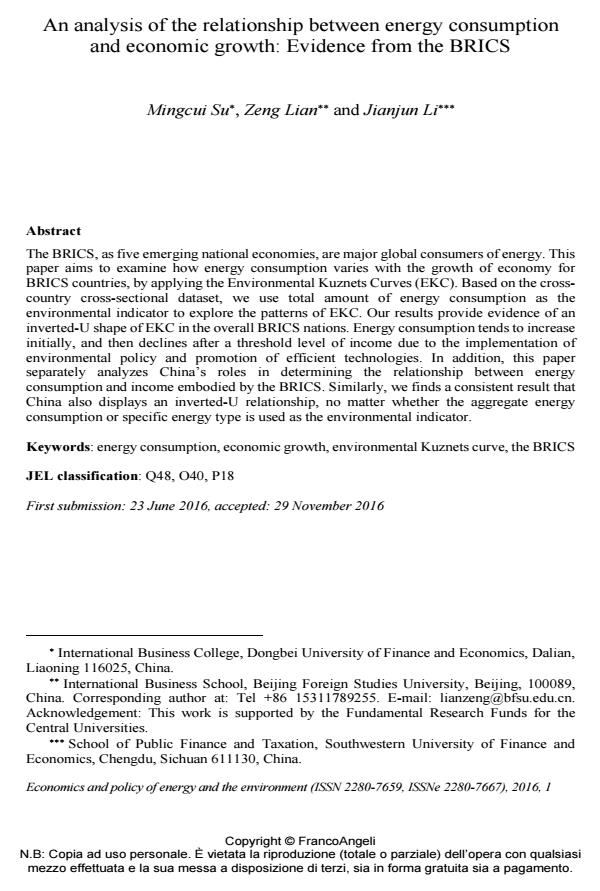An analysis of the relationship between energy consumption and economic growth: Evidence from the BRICS
Journal title ECONOMICS AND POLICY OF ENERGY AND THE ENVIRONMENT
Author/s Mingcui Su, Zeng Lian, Jianjun Li
Publishing Year 2017 Issue 2016/1
Language English Pages 17 P. 73-89 File size 860 KB
DOI 10.3280/EFE2016-001004
DOI is like a bar code for intellectual property: to have more infomation
click here
Below, you can see the article first page
If you want to buy this article in PDF format, you can do it, following the instructions to buy download credits

FrancoAngeli is member of Publishers International Linking Association, Inc (PILA), a not-for-profit association which run the CrossRef service enabling links to and from online scholarly content.
The BRICS, as five emerging national economies, are major global consumers of energy. This paper aims to examine how energy consumption varies with the growth of economy for BRICS countries, by applying the Environmental Kuznets Curves (EKC). Based on the cross-country cross-sectional dataset, we use total amount of energy consumption as the environmental indicator to explore the patterns of EKC. Our results provide evidence of an inverted-U shape of EKC in the overall BRICS nations. Energy consumption tends to increase initially, and then declines after a threshold level of income due to the implementation of environmental policy and promotion of efficient technologies. In addition, this paper separately analyzes China’s roles in determining the relationship between energy consumption and income embodied by the BRICS. Similarly, we finds a consistent result that China also displays an inverted-U relationship, no matter whether the aggregate energy consumption or specific energy type is used as the environmental indicator.
Keywords: Energy consumption, economic growth, environmental Kuznets curve, the BRICS
Mingcui Su, Zeng Lian, Jianjun Li, An analysis of the relationship between energy consumption and economic growth: Evidence from the BRICS in "ECONOMICS AND POLICY OF ENERGY AND THE ENVIRONMENT" 1/2016, pp 73-89, DOI: 10.3280/EFE2016-001004